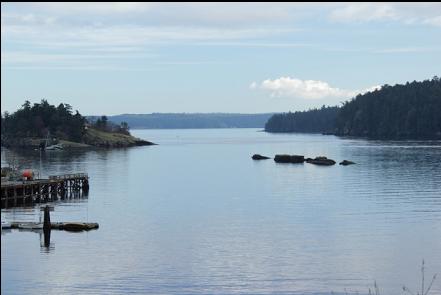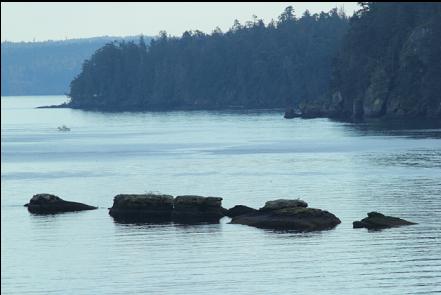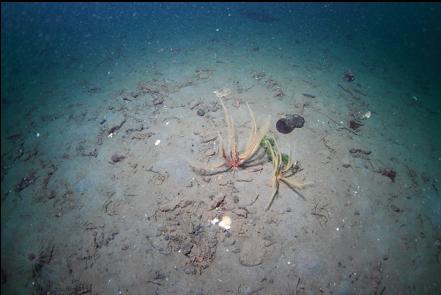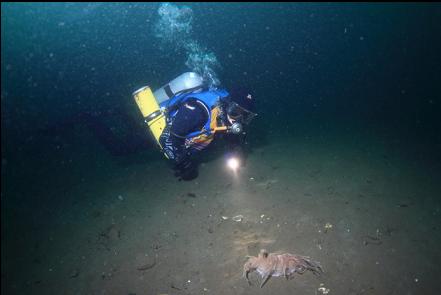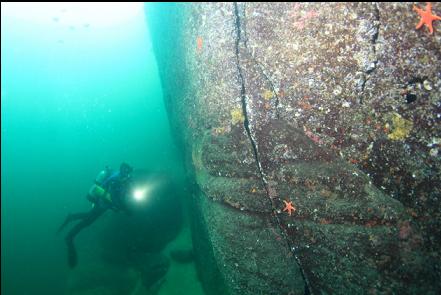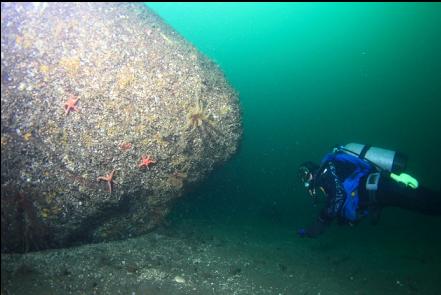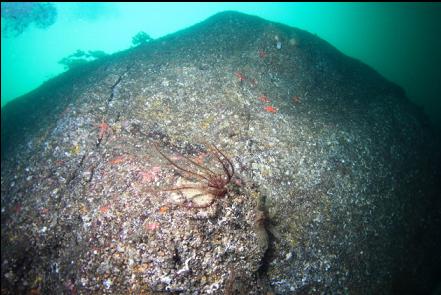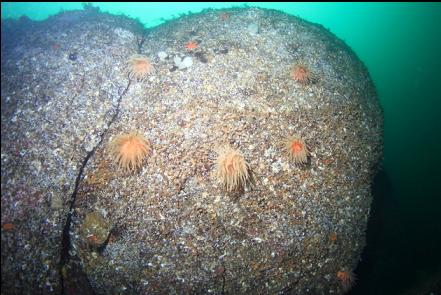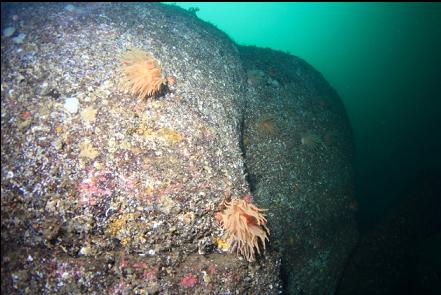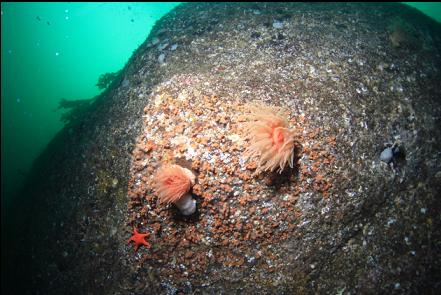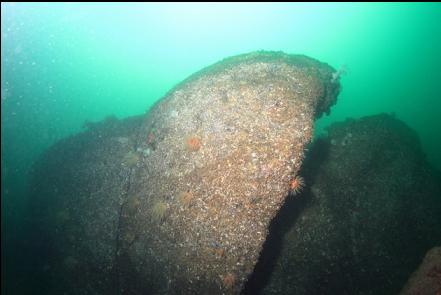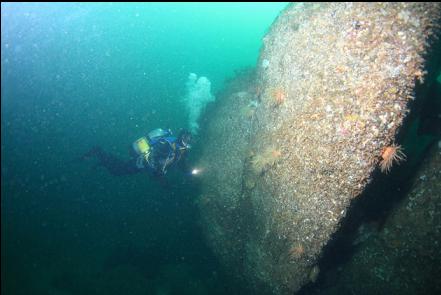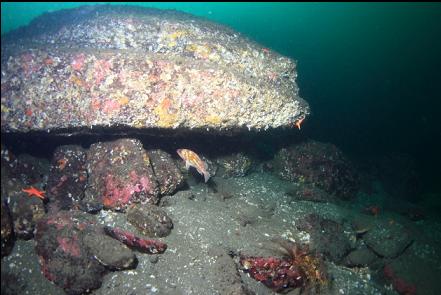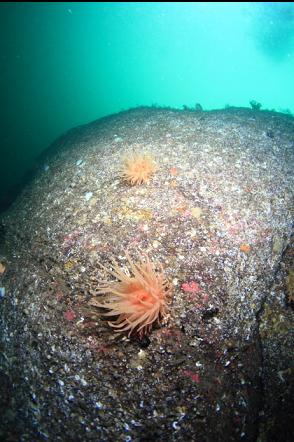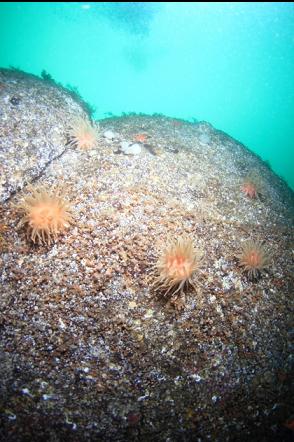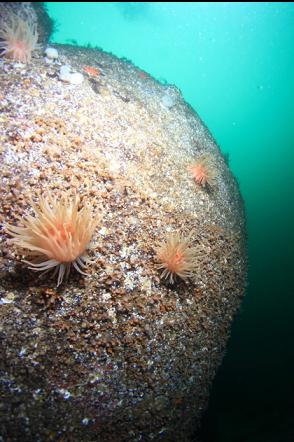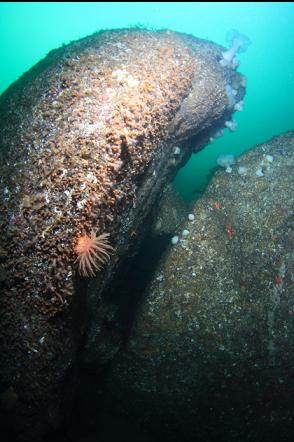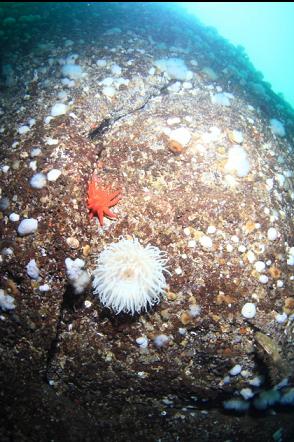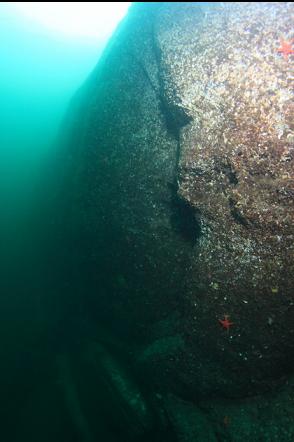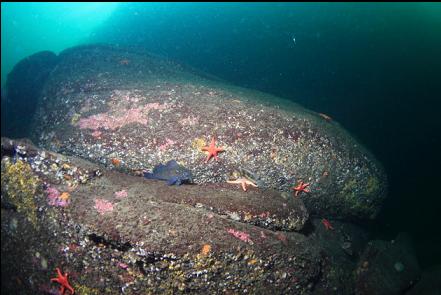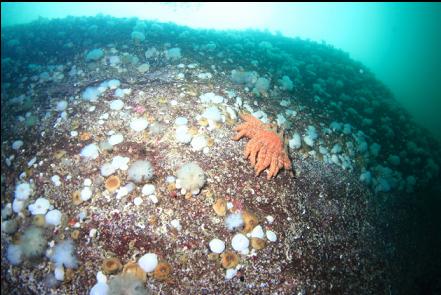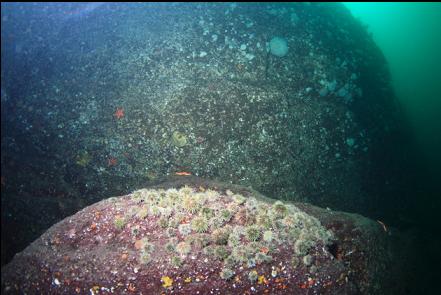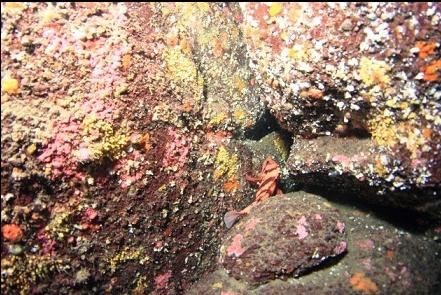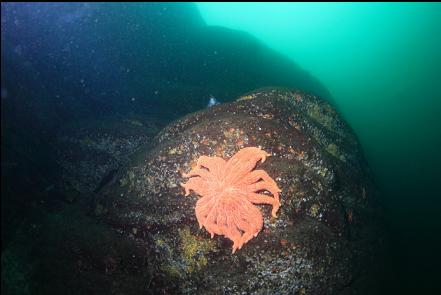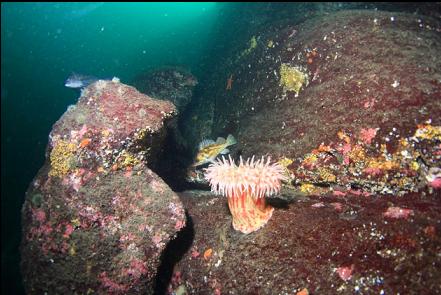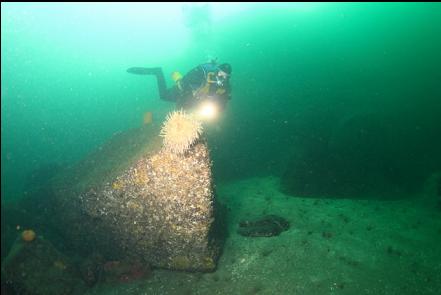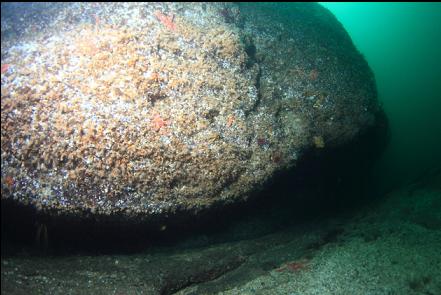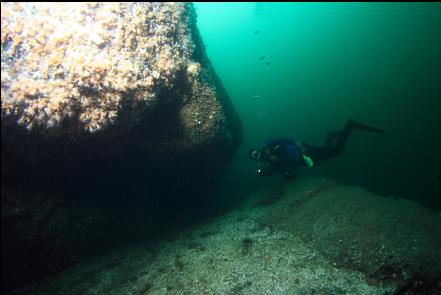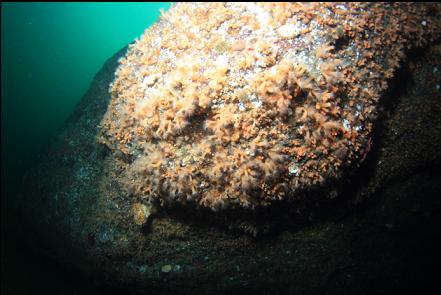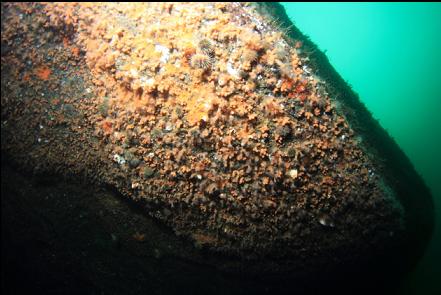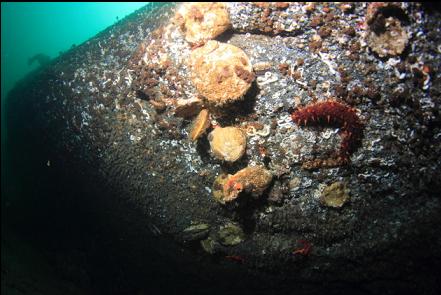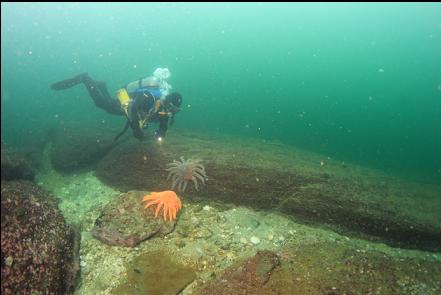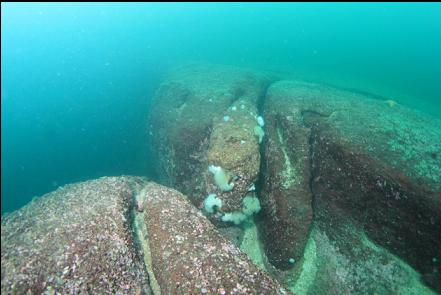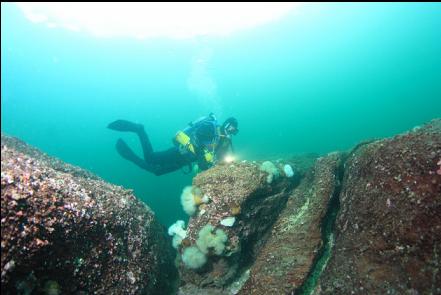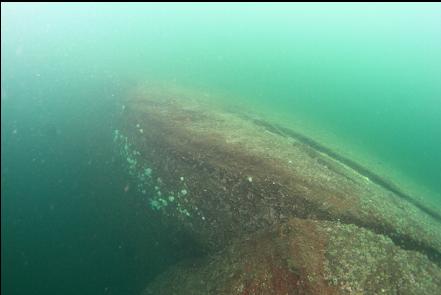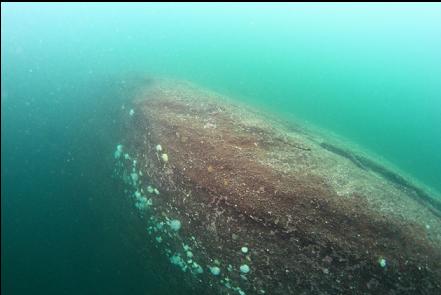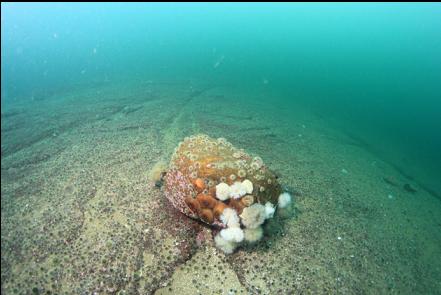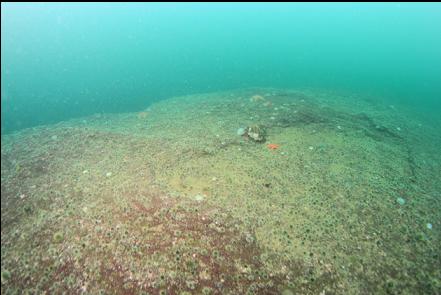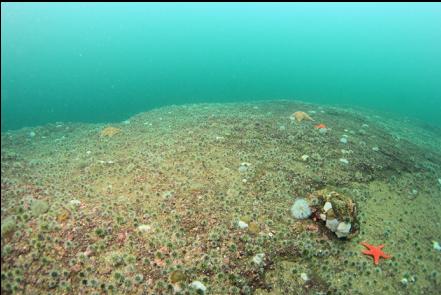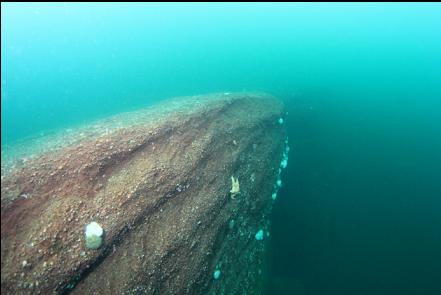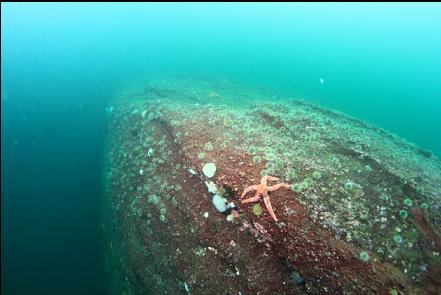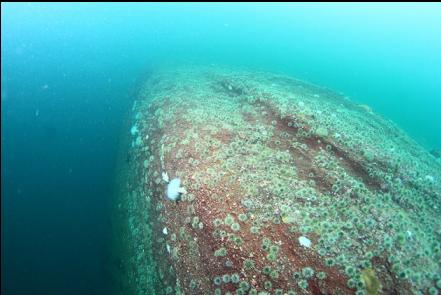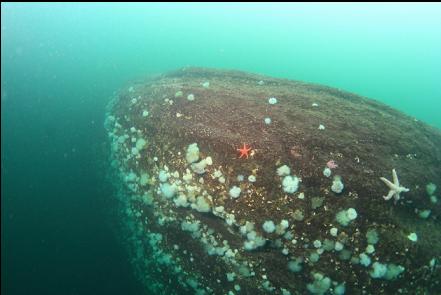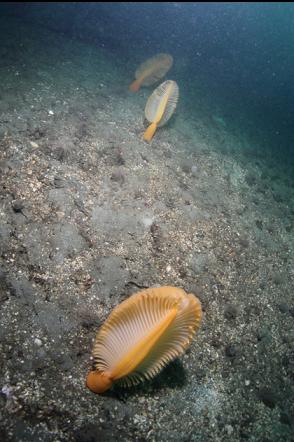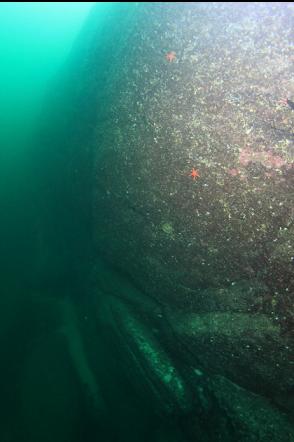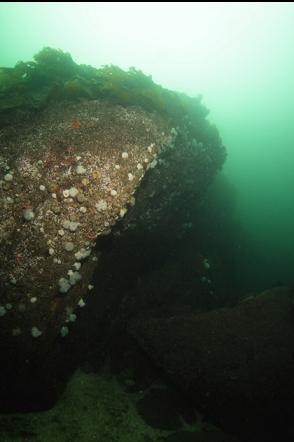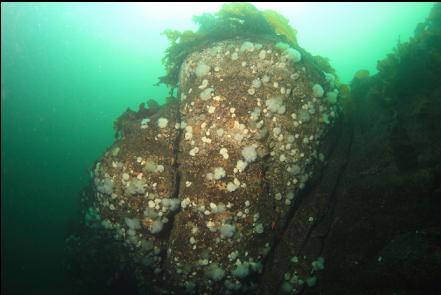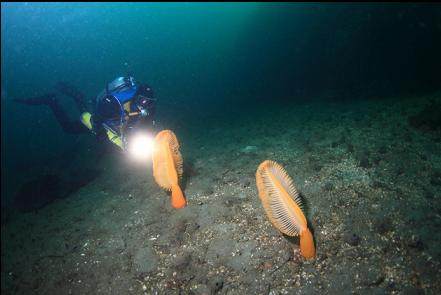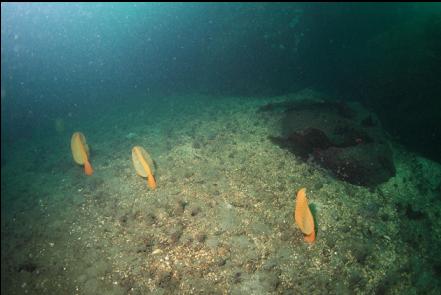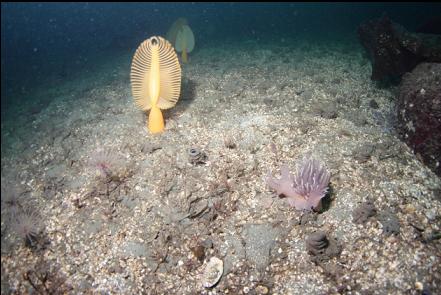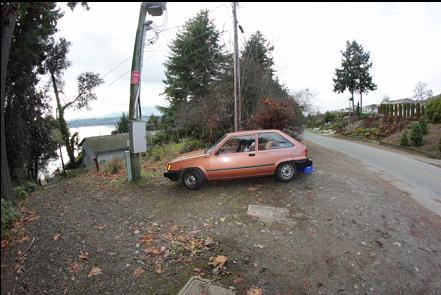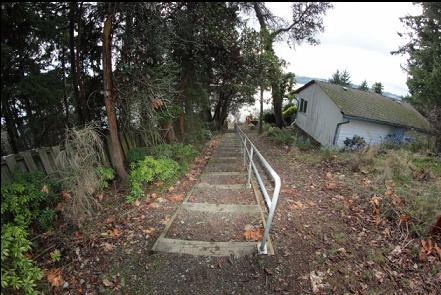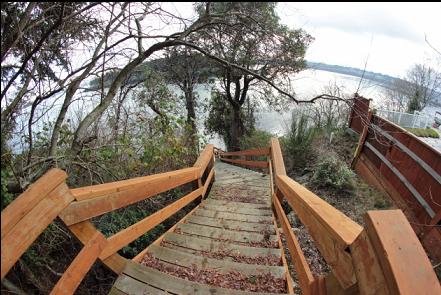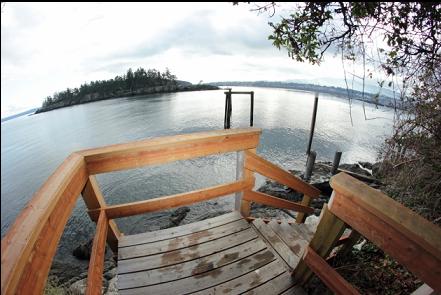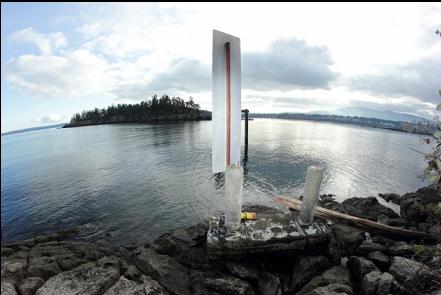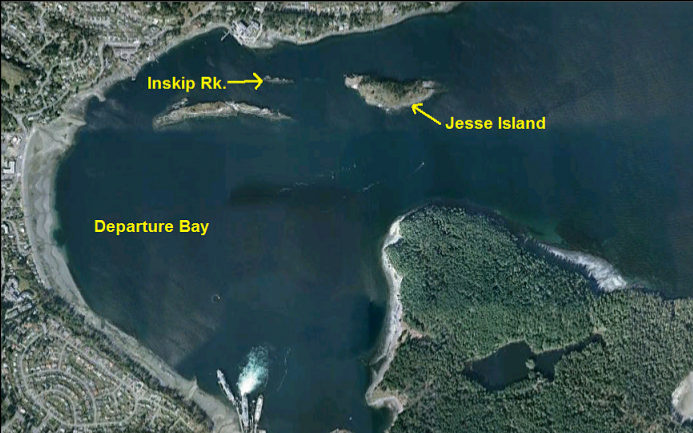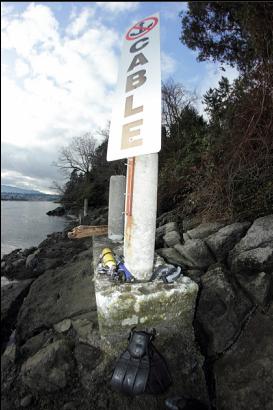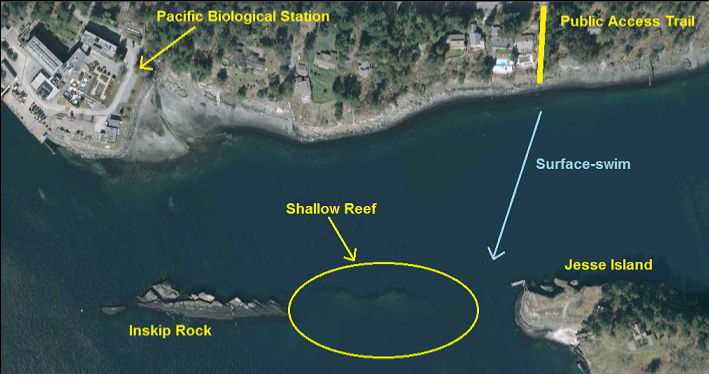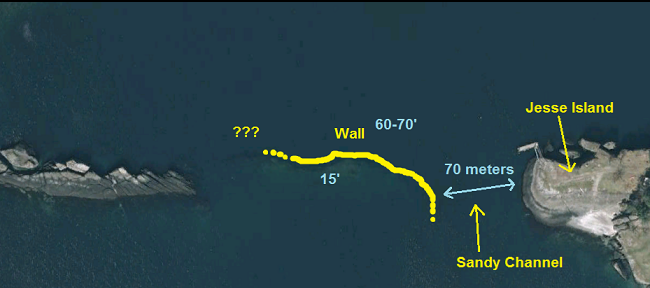Inskip Rock is a small, narrow reef just offshore from the Pacific Biological Station in Departure Bay, Nanaimo. The marine chart shows that, on it's North side, the reef drops almost straight down from near the surface to over 60 feet deep. The easiest way to dive here from shore would be to swim out from the Pacific Biological Station parking lot which is right next to the water (about 150 meters from Inskip Rock). I doubt they'd appreciate random people using their property for diving (maybe next time I'll ask them), so I drove further up Stephenson Point Road to the public access stairs that I use to dive Jesse Island. From the bottom of these stairs, it's about a 200-meter swim to the point with the dock on Jesse Island. According to the chart, Inskip Rock continues underwater towards Jesse Island as a long reef, just under the surface. There's about a 60-70 meter gap between Jesse Island and this reef. I swam out on Jan. 12, 2013 to the dock at the tip of Jesse Island. I descended and followed my compass across the sandy channel (60 feet deep) towards the Inskip reef. Visibility was 30-40'. There were a few feather stars and giant nudibranchs on the sand. I reached the reef sooner than I expected. A sandstone wall popped up in front of me. On it, there were zoanthids and more anemones than I'm used to seeing on Nanaimo shore dives. There were several pale pink crimson anemones and some painted anemones. There were also clusters of smallish feather stars. The base of this wall was about 60' deep and there were piles of boulders and big slabs of rock stretching out from it. This looked like perfect wolf eel habitat, but I didn't see any. I saw groups of perch, copper rockfish, kelp greenlings and a tiger rockfish. The wall had several large vertical and horizontal crevices in it, like small caverns, but nothing like the swim-throughs at Jesse Island. I saw an Irish lord sitting next to a heart crab, a golf-ball crab and 2 juvenile Puget Sound king crabs (unfortunately the strobe on my close-up camera wasn't firing). I swam up the wall and saw a large area about 40 feet deep that was covered with small plumose anemones. These stretched up to the top of the wall (about 16 feet deep). I surfaced to see how far I was along the reef, but I hadn't even made it to the exposed part of Inskip Rock. It was time to swim back. I swam back towards Jesse Island along the top of the Inskip reef (again, about 15-18' deep). The flat top of the reef was covered with small green urchins and some small, white plumose anemones. I could see the edge of the wall drop straight down below me (like many sandstone walls in the Nanaimo/Gabriola area). It always reminds me of the edge of a table. At the tip of the reef facing Jesse Island, I dropped back down to the base of the wall for another quick look and saw several sea pens, tube-dwelling anemones and giant nudibranchs on the sand.
I was pleasantly surprised by this dive. The dramatic topography and the decent amount of invertebrate life made me want to keep swimming farther along the wall. If I lived in the area, I'd probably be down here every weekend for awhile, progressively exploring the wall for as long as my tank would allow. Unfortunately the driving time from Victoria, the surface swim and the hike back up the stairs discourage me from doing more than one dive here a day.


